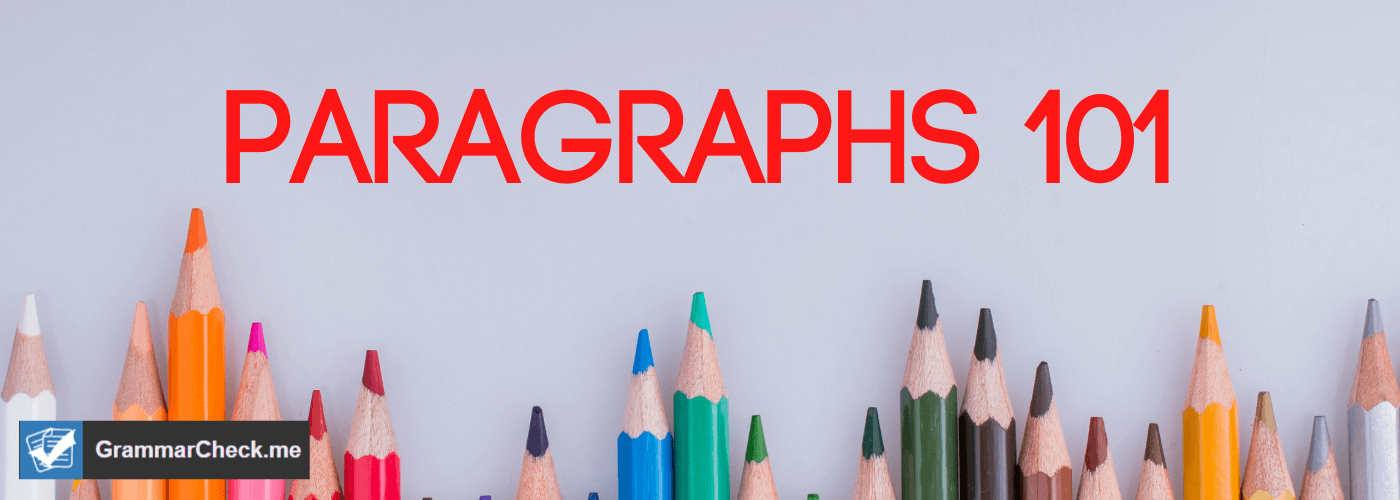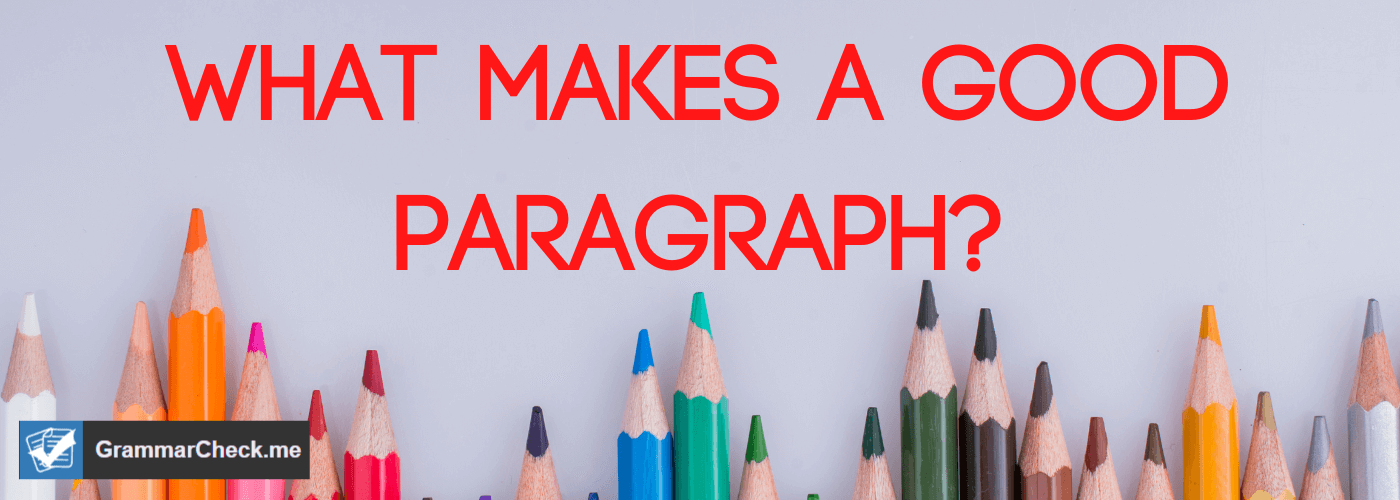Have you ever wondered how long your paragraphs should be? Or whether you’re including too many or too few sentences in each one? In this blog post, we’ll discuss the ideal paragraph length and provide some tips for keeping your paragraphs concise and readable.
Paragraph Basics

Paragraphs, and the sentences that shape them, are perhaps the most important way to give writing direction.
- Every paragraph needs to have a main point, idea, or focus.
This applies to both academic writing and non-fiction alike. While fiction will traditionally use paragraphs to direct the reader, develop characters and themes, and move the story along, non-fiction writing uses paragraphs in the same manner.
Non-fiction, on the other hand, does not always need to develop characters or themes, but simply conveys information.
In both cases, the use of paragraphs results from the same need:
- Divide works of writing into separate
- Isolated ideas
- Allow the reader to better understand when a point is being made
- Understand when the author moves on to a new point or idea.
Paragraph Length 101
During schooling, children are often taught that a paragraph should contain a certain amount of sentences. It is a basic part of prewriting to determine how long your paragraphs are going to be!
- Most often, three to six sentences are regarded as good paragraphs in a classroom setting.
This may be beneficial to help students identify when a new idea comes into play, and thus a new paragraph, but in reality, there are no concrete amount of words or sentences that make a paragraph correct.
Takeaway: The only real rule of thumb is that once an idea has been explained sufficiently a new paragraph can be applied, and is appropriate.
How Many Words?
The lengths of paragraphs will vary depending on the author’s style, the type of writing, the topic, and the audience.
For example, if you’re writing an academic paper, you’ll generally want to use longer paragraphs with more complex information. On the other hand, if you’re writing a blog post or something for a general audience, shorter paragraphs are usually easier to read.
- As a general rule of thumb, paragraphs usually fall somewhere in the 100-200 words in a paragraph.
Short paragraphs are easier to digest for the reader. Long paragraphs can distract from the overall message of the writing. But ultimately, it’s up to the writer to decide what length works best for their purposes.
How Long Should A Paragraph Be In High School?
To get even more specific, let’s discuss how long paragraphs should be for high school students. Does high school writing have different rules?
The answer is no! Students should follow the same writing conventions as everyone else. Keep your paragraphs in the range of 3-5 sentences. Ensure each paragraph is topically relevant and as concise as possible! Your teacher will likely give you a bad mark if your paragraphs run on and on!
What Makes A Good Paragraph?

Expanding on ideas from the previous paragraph is very common, and often helpful to the reader, but it is important to make sure that any expansion of information is new content.
That is the fundamental basis of what constitutes a good, proper paragraph – an idea, point, etc. that is developed and explained. Once this has been accomplished a new paragraph, perhaps an expansion of previous content, is appropriate.
- Maintaining a central focus is the most important thing to consider when writing paragraphs – as word count can vary widely from one to another.
Many well wrote paragraphs often only contain a single, detailed sentence. Another paragraph may take over a dozen. The complexity of the point usually determines the length of a paragraph, and as well how much detail is spent on explaining the complexities.
A good paragraph consists of the following:
- Topic sentence
- Several supporting sentences
- Concluding sentence
- Paragraph breaks
Essentially, the important thing to consider when organizing a piece of writing is what points are going to be made, and how to divide them into a format that is easy to read and understand. Take the time to think lay out your thoughts and follow proper prewriting techniques to outline your paragraphs.
- A proper paragraph is made from an idea, or point, that is developed until a new idea or point needs to be made.
Isolating these ideas into paragraphs makes the work of writing easier for both the author to organize thoughts, as well as making the text and ideas within, easier to understand from a reader’s perspective.
Writing Introduction Paragraphs
Introductions can be tricky. On the one hand, you want to give your reader a sense of what your paper is about. On the other hand, you don’t want to give too much away.
Here are a few tips:
- Start with a bang.
- Your introduction should grab the reader’s attention from the very first sentence. One way to do this is to start with a surprising statistic or fact.
- Get to the point.
- Don’t waste time beating around the bush. In your introduction, make sure to answer the question “What is this paper about?” in as clear and concise a manner as possible.
- Give some background.
- Once you’ve gotten the attention of your reader and told them what your paper is about, it’s time to provide some context. Give your reader a brief overview of the history or background of your topic. This will help them understand your argument and follow your line of reasoning.
- End with a strong thesis statement.
- The thesis statement is the most important part of your paper. It should be clear and concise, and it should state the main argument of your paper.
- Keep it brief
- An introduction paragraph should be about 50-80 words long.
Writing Concluding Paragraphs
So you’ve made it to the end of your formal essay. Congrats! The concluding paragraph is your last chance to make an impression on your reader. Here are a few tips to help you write a strong conclusion:
- Restate your thesis in a different way.
- This will help to remind your reader of what your paper was about and leave them with a fresh perspective.
- Summarize the main points of your paper.
- This will help to remind your reader of what they have read and give them a sense of closure.
- Leave your reader with something to think about.
- Pose a question, offer a new perspective, or challenge your reader to take action. Whatever you do, make sure that your conclusion is engaging and leaves a lasting impression.
- Conclusion paragraph length should be about 60-80 words
FAQs – Paragraphs
There is no hard and fast rule for how long a paragraph should be. However, most teachers typically recommend three to six sentences per paragraph. The reason for this is that shorter paragraphs are easier for readers to digest. They can also help to break up longer sections of text and make them more manageable.
The average paragraph is around 200 words. This can vary depending on the type of writing you’re doing. For example, if you’re writing a paper for school, your teacher may have a specific word count in mind. In general, though, a paragraph should be about five to seven sentences long.
A reasonable range would be around 450-500 words, but it really depends on the context and what you’re trying to accomplish.
A paragraph is typically 3 to 8 sentences long, but it can be shorter or longer depending on the context. In general, a paragraph should be long enough to develop one point thoroughly, but not so long that the reader loses focus or becomes bored.
Normally, a paragraph is one to three sentences long. However, there’s no real limit to how long or short a paragraph can be. You could have a one-word paragraph or a ten-page paragraph if you wanted. It all depends on what the writer wants to do with the text.
Final Thoughts
So, there you have it! Everything you ever wanted to know about paragraphs and then some. By following the simple tips outlined above, you can improve your writing skills by leaps and bounds. Be sure to proofread and use our Essay Checker to making avoid silly mistakes!
The best part is that these guidelines work for any type of writing, whether it’s an academic paper, a business proposal, or even a blog post like this one. Paragraphs are an essential part of good communication, so make sure to use them wisely.
